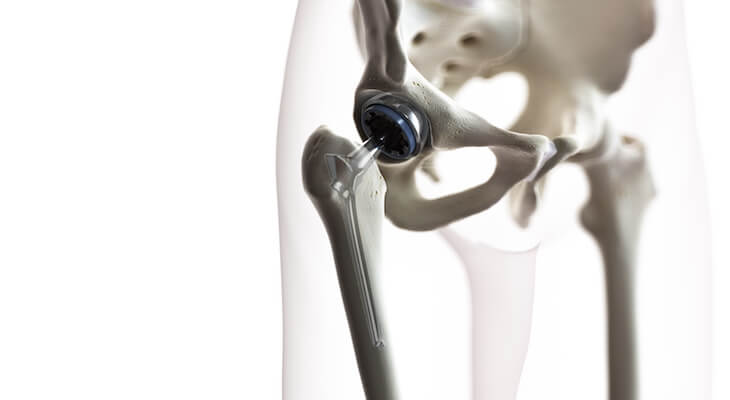How Much Does a Hip Replacement Cost?
If you’re among the 30-40% of Americans over 60 who have chronic hip pain and are considering hip replacement surgery, you’re not alone. Each year, about 300,000 patients have hip replacement surgeries.
According to the American Academy of Orthopaedic Surgeons, most patients who have hip surgery ”experience a dramatic reduction of hip pain and a significant improvement in their ability to perform common activities of daily living.”
But to determine whether joint replacement surgery is for you, there’s a lot to consider, such as the reasons behind your hip pain, surgery options, course of treatment, and hip replacement cost.
Average Hip Replacement Cost
The cost of a hip replacement depends on several factors, such as the type and scope of surgery and your health insurance coverage. Where you live matters too. For example, total joint replacement surgery in New York City may be higher than in a smaller town. Here is a ballpark figure for hip replacement costs.
The average cost for a total hip replacement (total hip arthroplasty) is $23,203 to $74,000. While a partial hip replacement (hemiarthroplasty) averages $22,000 to $68,000. A hip revision surgery costs about $21,224 with a range of $10,165 to $44,602.
If you have insurance, the amount you’ll pay out of pocket depends on the type of health insurance coverage you have, your out-of-pocket maximum, your share of the copay or coinsurance, and whether you have met your deductible.
For specific pricing on the procedure at hospitals in your area, use Compare.com’s helpful price comparison tool:
Most Common Reasons for Hip Replacement
Your hip is a ball-and-socket joint. The femoral head, at the top of the thigh bone, forms the ball portion. The socket is a section of your pelvis called the acetabulum. A healthy hip joint gives you the ability to move forward, backward, side-to-side, and rotate.
When either through a disease process or trauma, your hip joint stops functioning correctly, you may need hip arthroplasty, also called hip replacement surgery. Some of the most common causes of hip joint dysfunction include:
Osteoarthritis (OA)
OA is the most common type of arthritis. It occurs when the cartilage between your bones deteriorates during normal wear-and-tear of your joints. OA is a degenerative disease, which means it gets worse over time.
While it affects everyone differently, the most common symptoms of hip OA are:
- Pain in the hips, groin area, knees, thighs, and buttocks
- Limited range of motion
- Stiffness of the joint
- Clicking or popping when the joint bends
- Swelling
- Muscle weakness
Diagnosis of OA depends on a physical examination, radiology studies like X-ray, magnetic resonance imaging (MRI), and computed tomography (CT) scans. Your doctor may also check for fluid in the hip joints.
Rheumatoid arthritis (RA)
RA is an autoimmune disease that affects your whole body. It can cause damage to your hip joint through constant inflammation. While a total hip replacement won’t cure RA, it may improve symptoms like hip pain and joint stiffness.
Your doctor may test your blood for inflammatory markers and use an X-ray, MRI, and CT scan to evaluate the hip joints.
Hip Fractures
Most hip fractures are due to trauma, either from an accident or a fall. If you have osteoporosis, it’s possible to fracture your hip during everyday activities like walking down steps or stepping out of a bathtub. A fractured hip can cause pain in the hip joint, legs, knees, and buttocks.
Radiologists use X-ray, MRI, and CT scans to spot cracks in the femur or upper leg bone to diagnose hip fractures. Hairline fractures are a common cause of delayed diagnosis because they are small and easy to miss.
Femoral Neck Necrosis (FNN)
Also called osteonecrosis or avascular necrosis, FNN is a rare disorder of the femur and hip joint which sometimes occurs when blood supply to the hip gets interrupted.
Symptoms include pain ranging from a dull ache to severe pain in the hip, groin area, buttocks, and knees. FNN is difficult to catch early because of the lack of radiologic findings.
Types of Hip Replacement Surgeries
The goal of hip replacement is to improve joint function and mobility, as well as to decrease pain. The cost of a hip replacement depends on a few factors, including the type of surgery and the medical device implanted.
Total Hip Replacement
A total hip replacement involves removing all parts of the ball and socket joint, including the femoral head, a portion of the femoral shaft, and the acetabulum of the pelvis. Prior to your surgery, your orthopedic surgeon and medical device company will have worked together to design a prosthetic replacement joint based on a 3D model of your hips and pelvis.
Partial Hip Replacement
Hemiarthroplasty or partial hip replacement involves replacing only the ball (femoral head and femoral shaft) portion of the joint.
Surgical Revision of Hip Replacement
Hip revision is a reoperation of a total or partial hip replacement. Because of the added complexity, a revised hip replacement is a longer surgery and usually costs more.
Types of Hip Prosthesis
An implantable medical device that replaces a hip joint is called a hip prosthesis. Metals like cobalt-chromium, titanium, zirconium, and nickel are some of the most common materials. There are even metal-on-plastic and ceramic-on-metal devices which are the least expensive.
What to Expect Before, During, and After Your Hip Replacement
Planning for hip replacement surgery begins weeks or months before your surgery date. This allows time to identify and address any risk factors, adjust medications as needed, and design and manufacture any custom prosthesis.
(Disclaimer: The following information is for informational purposes only and provides only a general outline of what someone like you may experience before and after joint replacement surgery. Please follow the advice of your surgeon and health care team.)
Pre-operation:
- Make plans for an inpatient hospital stay lasting 2-3 days.
- Complete your outpatient lab work, radiology tests, and anesthesia consultation.
- Complete pre-authorization with your insurance company.
- Finalize pre-admission paperwork, submit a surgical plan to your health insurance company, and pay any up-front out-of-pocket costs like your deductible and copay.
Day of your surgical procedure:
- Arrive at the hospital for admission.
- Get prepped for surgery.
- A member of your surgical team will ask you to verify your identity, the surgery you are having, and the name of the doctor, and they’ll mark the surgical site.
- Receive any pre-op meds before going into the operating room.
Total hip replacement surgery usually takes 1 to 2 hours to complete. After surgery, you will go to the post-anesthesia care unit (PACU), also called the recovery room.
Hospital course:
During the first 12 to 24 hours, the focus will be on pain management, wound care, and activity. A continuous passive motion (CPM) machine will keep your joint moving to maintain your range of motion. Before discharge, you’ll need to demonstrate bowel and bladder function and your ability to walk with help.
Post-hospital course:
Increase your activity level over a 6-week period or until you can perform all of your activities of daily living with more specific goals to be set by your surgeon and physical therapy team.
By the time of your follow-up, in about 6 weeks, you should have resumed all light activities. It’s normal to have mild pain on exertion or after waking up, but moderate to severe pain should be reported.
Find Specific Hip Replacement Costs in Your Area
Finding exact health care costs online can be tricky and sometimes unreliable. The Compare.com price comparison tool makes it easy to see how much health care providers in your area charge for hip replacement surgery, plus thousands of other procedures.





